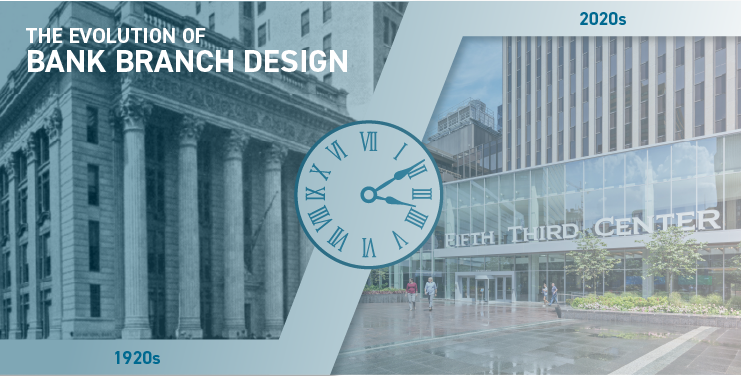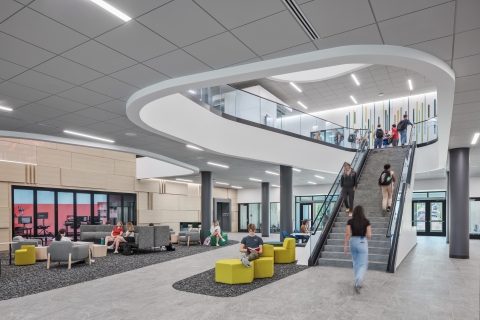
The Evolution of Bank Branch Design Part III: Experiential Graphic Design: Empowering Customers
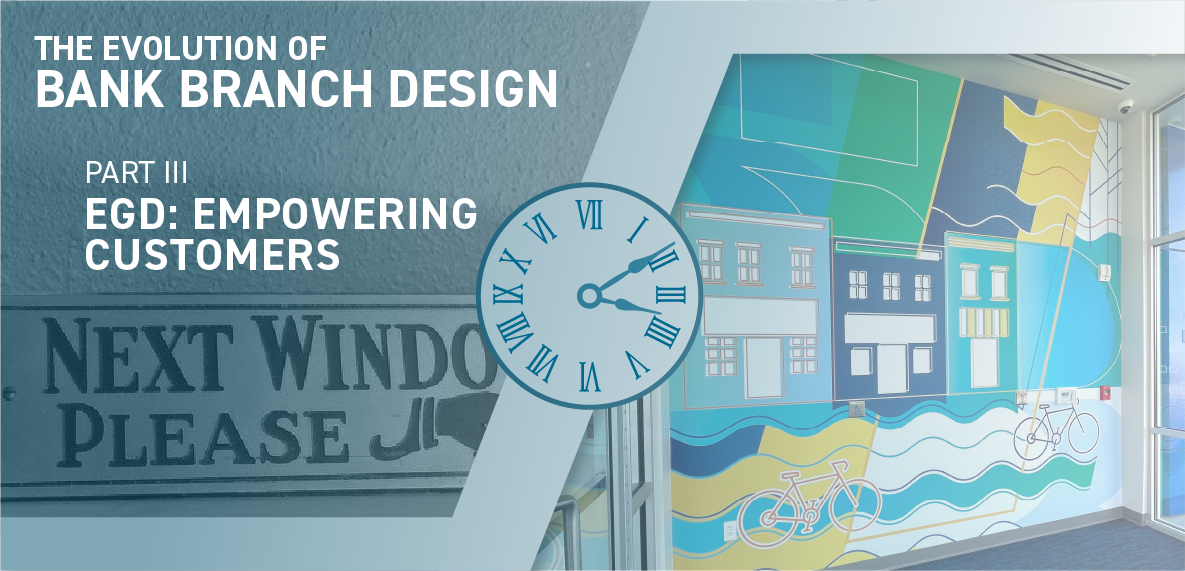
As we noted in the first installment of this blog series, banks throughout time have leveraged building materials (like polished stone, rich wood, and enduring bronze) and style (traditional, conservative) as a way of communicating their strength and integrity—a necessary and reassuring message to customers.
The modern banking environment looks very different than it did 100 years ago, and now, more than ever, the need to connect and build trust with customers is paramount. Architects and designers are responsible for imbuing these spaces with a similar symbolic status that is culturally relevant today. Graphics, as a language of symbols, can be key to achieving this goal.
Environments as Communicators
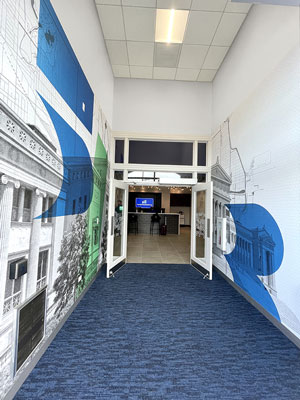
The modern field of Environmental (Experiential) Graphic Design has its roots in architectural signage. Throughout the 20th century, as the need for information throughout increasingly complex public spaces emerged, so too did a more sophisticated understanding and use of brand identity. These two distinct areas of practice ran in parallel for a long time but have since blended into the field of Experiential Graphic Design (EGD) as we know it today. EGD specifically leverages various media—image, typography, pattern, color—to communicate information and ideas within the built space. We expect graphics in our modern environment to inform, orient, and inspire us by providing content-rich experiences.
At BHDP, this manifests across many distinct platforms, such as branded corporate environments, activation of civic spaces, or signage and wayfinding packages across college campuses. Graphics also play a vital role in retail and retail banking environments by empowering customers to access the best user experience possible. Much attention is paid to the virtual user experience, but what does this mean for the brick-and-mortar bank?
As hard currency has given way to an invisible flow of finances, so have the traditional bank environments of the early 20th century yielded to the flexible, dynamic spaces offered by the modern bank branch. Both cultural shifts and practical response to suburban sprawl have resulted in new real estate and design strategies. Many of these strategies have to balance the reality that, while much transactional activity can occur anywhere, weightier transactions—those that demand a more personal touch—still often occur in a physical branch. Research shows that today's customers—even of digital banking—desire the option to visit a physical branch. Because of this, the built environment representing the banking industry remains as important a touchpoint as ever.
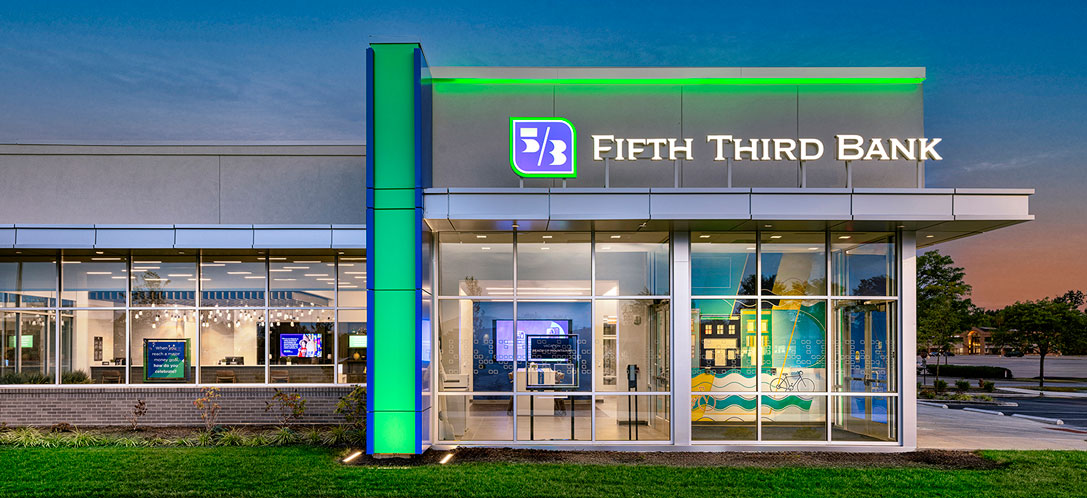
The design of the physical banking environment can influence the perceived banking experience.
Our Design Principles Applied to the Retail Banking Environment
BHDP’s work is guided by three main design principles: Informed, Empathetic, and Exciting. These are at once enduring and flexible—ever applicable to the various challenges at hand. How might these apply to the retail banking environment?
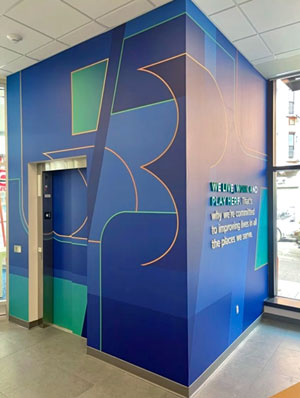
Informed: One of the greatest ways this principle shows up is in our awareness of the branch’s surrounding context. Localized content is a gesture of welcome and symbolizes a bank’s commitment to the area. Consistent application of brand identity is another critical piece of a successful environment. While we often think of Informed from the designer's perspective, this could also be interpreted as delivering on an environment that can inform others. Graphics give your space a voice, turning it into a communication powerhouse. Many customers prefer to control their own experience, and retailers are happy to let them do so. Graphics enable the confidently independent journey many customers crave.
Empathetic: A bank doesn’t just represent a financial stronghold. It symbolizes community progress, often manifesting in individual milestones: a mortgage on a first home, advice on a car loan, or support for shifting resources. Banks are involved in pivotal life moments. These spaces provide a comfortable and secure place for these to unfold.
Exciting: For some customers, going to the bank can feel like a chore. Graphics can offer a moment of delight along the way, whether through immersive murals or engaging brand content designed to be easily updated for a fresh look throughout the year.
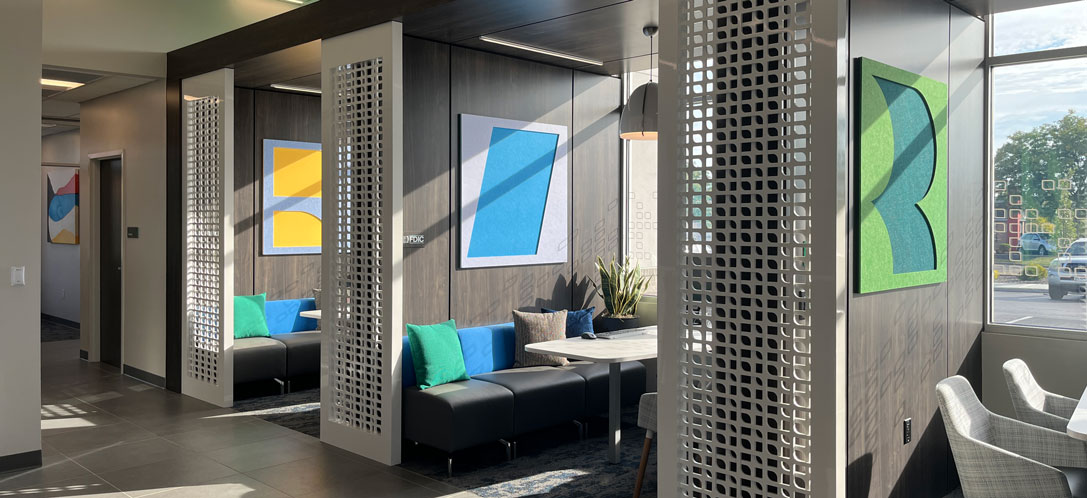
Branded graphics can provide excitement for customers and be updated as needed.
Maximize Your Experience
Other than a human being, graphics are your most powerful tool for directly engaging with your consumers and leaving them with the desired impression. A space, however comfortable, functional, or aesthetically pleasing, can only reach its maximum potential when given a voice with something compelling to say. Graphics are an invitation to connect, an active form of communication. When EGD is executed well, this critical layer of your built environment will become a valuable differentiator for your spaces, ultimately helping you deliver on your brand promise to customers and inspire their loyalty for years to come.
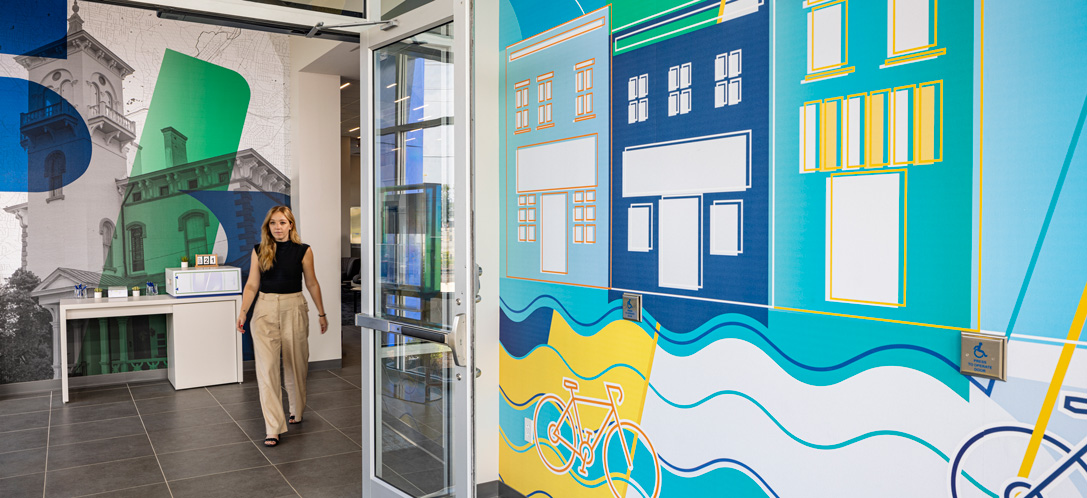
EGD can be used to enhance the banking experience and root the location to the area.
At BHDP, we are committed to Design for People. Our EGD practice makes good on this promise by making sure our spaces reflect and inspire the cultures of the clients we serve and their customers/associates.
Don’t miss an opportunity to make your space as engaging as possible. Connect with us to discuss how we can optimize your environment.
Check out Part I and Part II of the Evolution of Branch Bank Design blog series, and for more information on the topic, contact Declan McCormack at [email protected]. For more information on Experiential Graphic Design, contact Margaret Lange at [email protected]
Author
Content Type
Date
December 11, 2023



